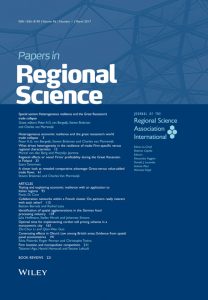Declining Racial Segregation and Racial Inequality
“Many US Blacks Moving to South, Reversing Trend” reads a recent headline from the New York Times. This article evokes more than a reversal of geographic mobility as it cites a “New South.” This article follows, an article from a few days earlier entitled, “Black and White and Married in the Deep South: A Shifting Image.” Based on 2010 Census data, these articles suggest an America where the reversal of racial migration flows and long-standing taboos may signal an end to racial inequality.
Other recent articles have noted that suburbia, the once all-white enclaves that allowed its inhabitants to hoard resources gained in a discriminatory labor market, are now places where new immigrants settle and an emerging black middle class embraces home ownership. The population shifts and more fluid racial boundaries that allow a growing number of people to identify as “mixed race” are encouraging signs. Certainly growing segregation and hardening racial boundaries would be unwelcome.
While these articles qualify as “good news”, I am both skeptical of the perennial overarching claims about the “end of racism” as well as concerned because the factors which continue to perpetuate racial segregation and its negative impacts still require attention.
Racial segregation contributes to a number of negative outcomes for racial minorities (Massey and Denton 1993). Segregation perpetuates what Charles Tilly called “durable inequality” as “localism” (Troutt 2008) results in “opportunity hoarding” by the dominant group. Secondly, segregation is not natural. Racial segregation was an active (and often violent) process of expulsion and exclusion of blacks by whites (Loewen 2005). Today, segregation is due to a legacy of racism as well as present-day practices rather than the result of race-neutral individual choices or people’s desire to “live with their own kind.”
Since racial segregation is neither natural nor neutral, Robert M. Adelman and James Clarke Gocker argued, in their 2007 article, “Racial Residential Segregation in Urban America,” that those who study segregation should consider the role of political-economic forces. They suggested looking more closely at gentrification and home mortgage lending. The authors noted that subprime mortgages and resulting foreclosures from these high risk loans were concentrated in minority neighborhoods. Since 2007, foreclosures in minority neighborhoods (and across the nation) have accelerated and are likely to reverse gains in minority homeownership, and potentially increase the, already high, wealth gap between black and white families.
The ensuing “Great Recession” has also not been colorblind in its effects. Despite the “New South” presented in some recent news articles, black neighborhoods in the South have not fared well. Last May, The New York Times ran a story entitled, “Blacks in Memphis Lose Decades of Economic Gains.” The piece looked at the devastating impact the housing crisis has had on black families. Across the nation, blacks have disproportionately suffered as a result of the economic downturn. More high-risk mortgages and less wealth make it harder for black families to shoulder economic shocks like job loss or health emergencies. With less family resources to weather hard times and a black unemployment rate of over 16% (almost double the white rate) an end to racial inequality may be further away than it appears.
Current political forces do not bode well for racial equality. Both the President and Congress now agree on a combination of tax cuts for the wealthy and government spending cuts – quibbling over the amounts but not the direction of policy. Spending cuts have resulted in layoffs of government workers and declining public services. These factors will immediately have a disproportionate negative impact on black families who have less wealth, are overrepresented in the public sector, and disproportionately rely on the kinds of social services on the chopping block.
As I prepare to teach my Minority Groups in America summer course, I find myself wondering how to approach these topics. I will note declining segregation over the past decade but I feel compelled to dispel the false impression that racism is slowly fading like some natural process washing away the nation’s sins. In presenting contradictory trends I hope to show students that things do change – and sometimes rapidly – but also counter a complacent “things will work themselves out” attitude. Hopefully, presenting the census data showing greater integration alongside the racially disparate economic data will provoke student’s desire to probe more deeply into issues related to racial inequality.
– Racial Residential Segregation in Urban America
– Teaching and Learning Guide for: Racial Residential Segregation in Urban America
– Many US Blacks Moving to South, Reversing Trend
– Black and White and Married in the Deep South: A Shifting Image





1520-6688/asset/Capture.jpg?v=1&s=b5076c49a7d1c5f1b9cf0dd9cd292394a3be81cc)